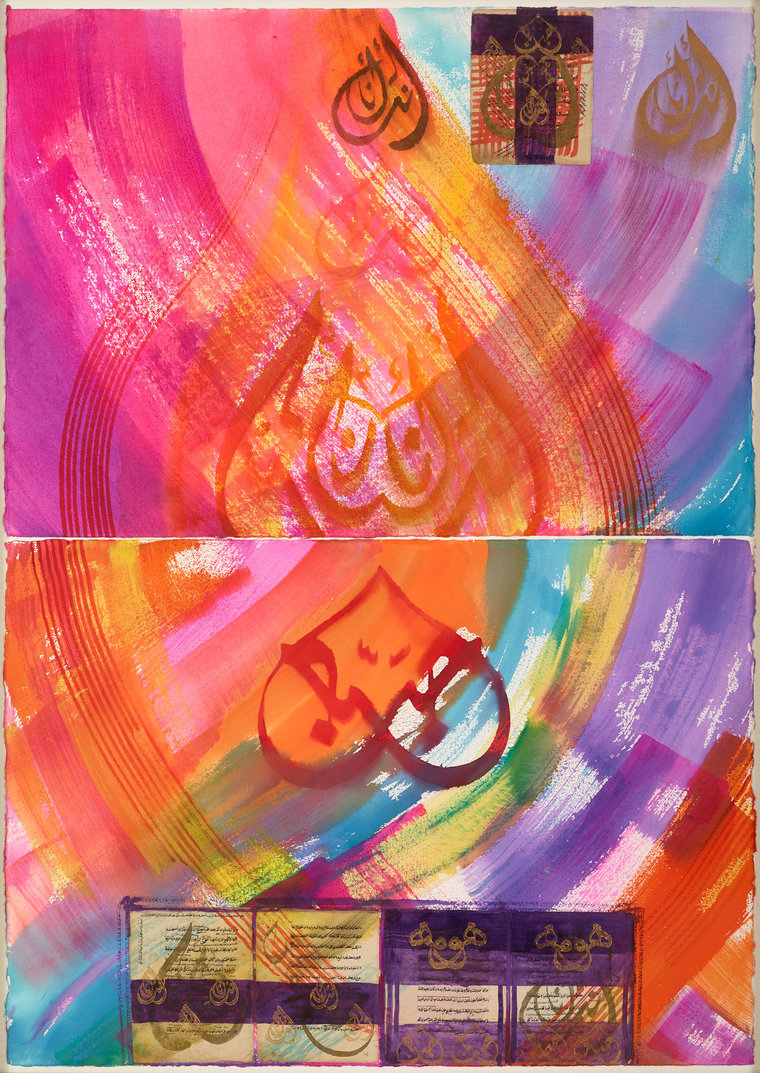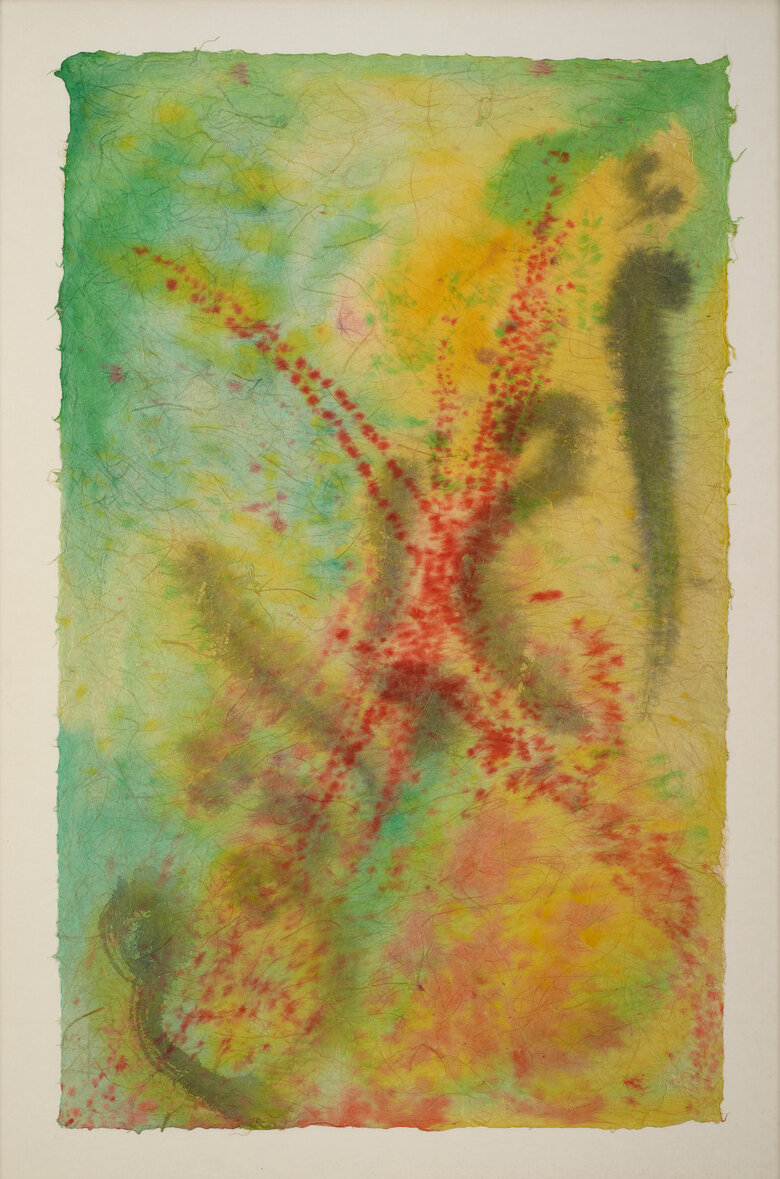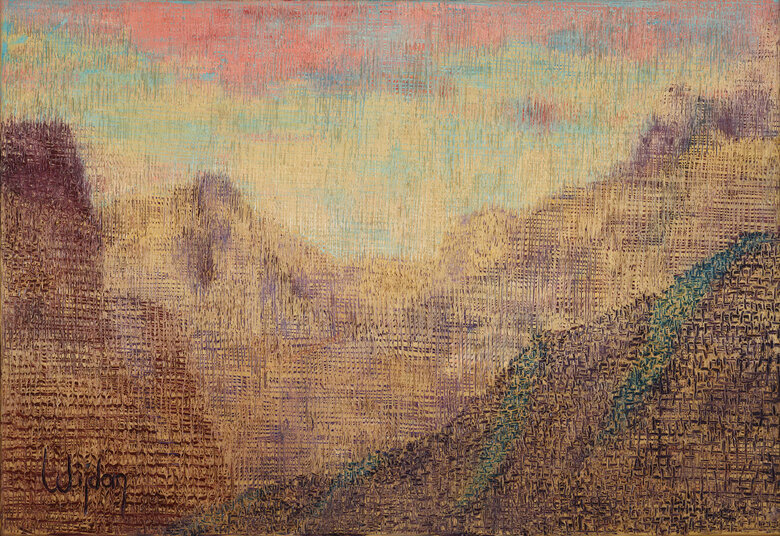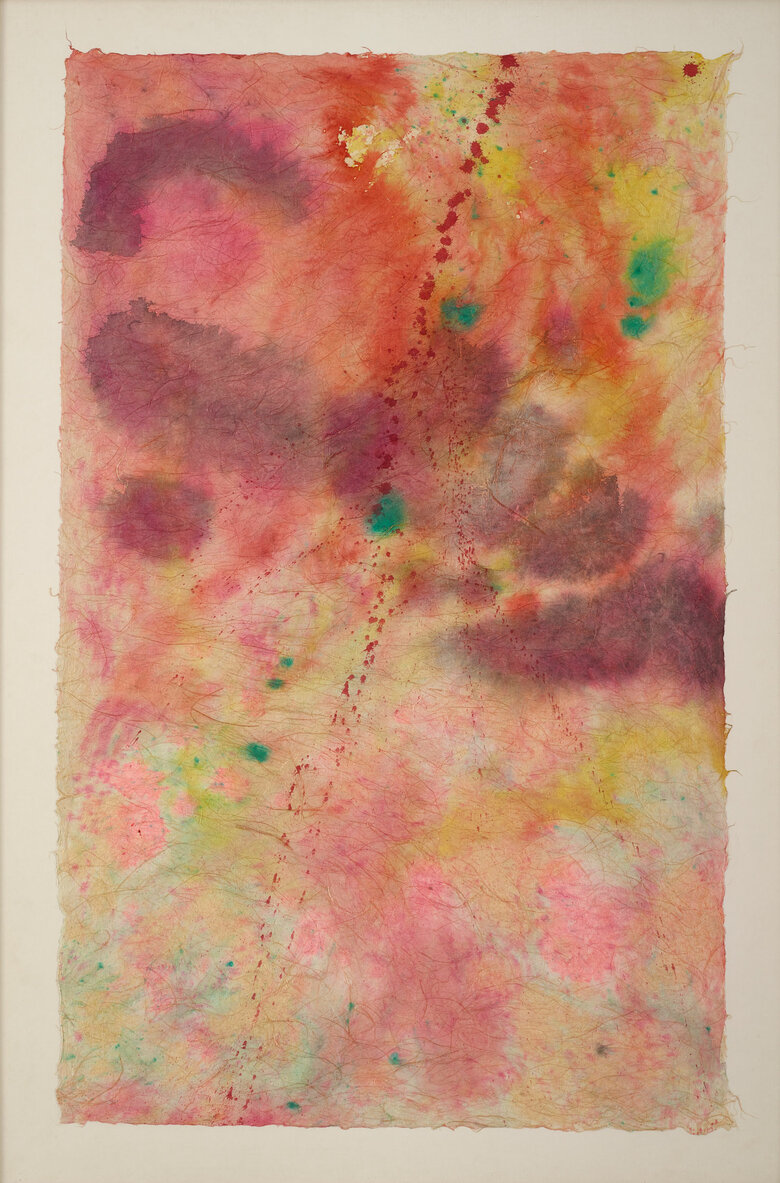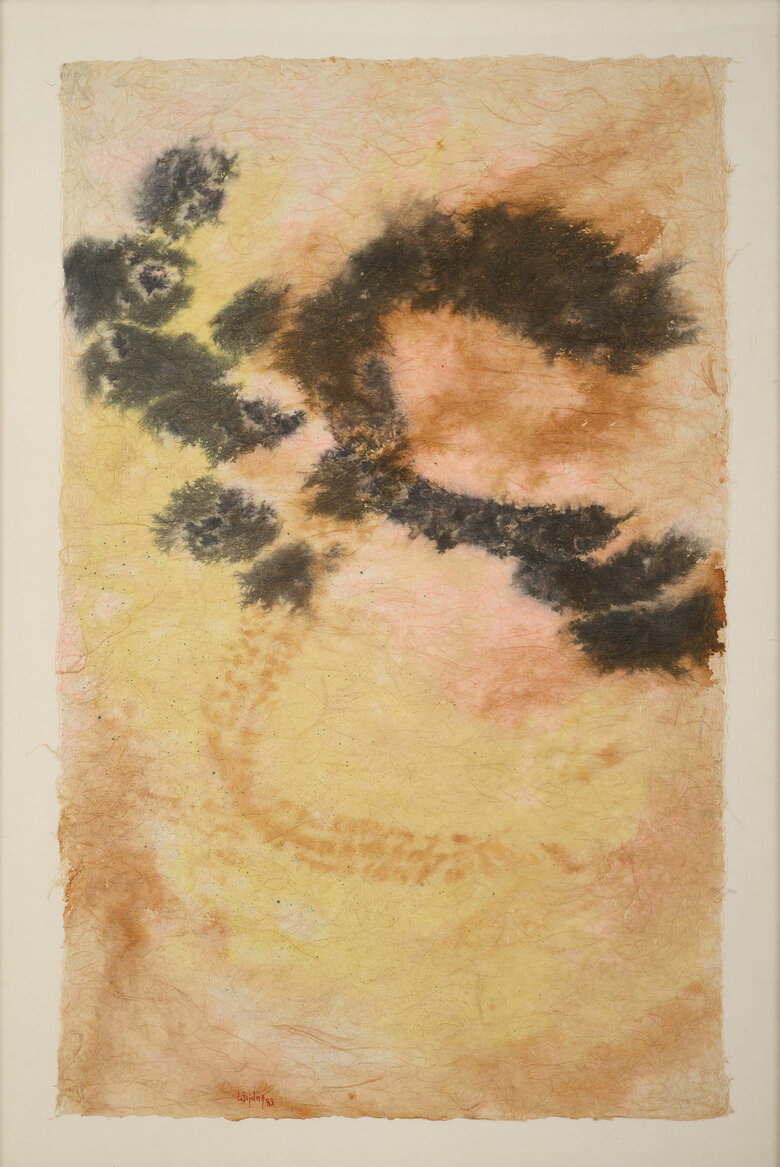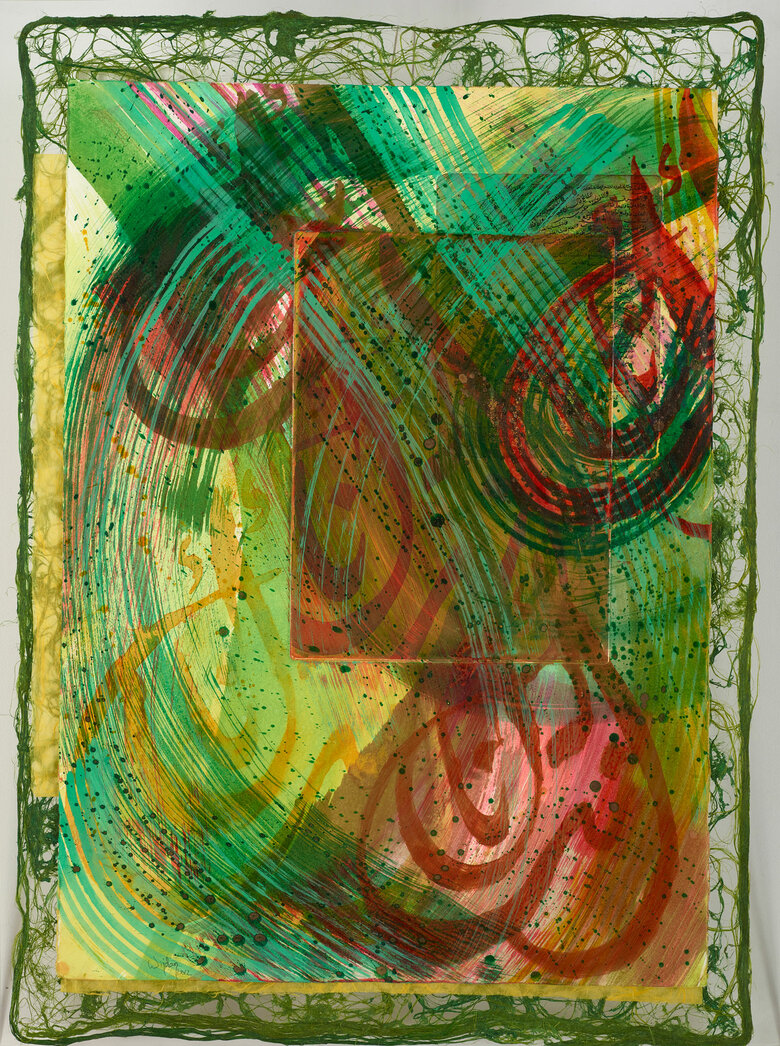Her Royal Highness Princess Wijdan Ali’s Spring Love is a vibrant meditation on divine connection, language, and artistic expression. Infused with bright colors and layered Arabic calligraphy, the painting features phrases such as “Howa” meaning “Him” in Arabic, (referring to God); “Hobb” meaning “Love”; and “Howa wa Ana” meaning “Him and I” (symbolizing the intimate bond between the self and the divine). The vibrant orange, violet, pink, and green colors are inspired by the fabrics draped over Sufi holy men and women in their shrines. They reinforce the work’s spiritual undertones. We also notice pages from a 19th-century Arabic grammar book glued onto the upper and lower registers of the painting’s surface. The textual fragments incorporated into the work highlight the structural and philosophical significance of language in shaping identity, faith, and artistic expression.
Princess Wijdan’s artistic philosophy is deeply rooted in the essence of Islamic art, which she describes as focusing on spiritual representation rather than physical depiction. Arabic calligraphy, with its central role in transmitting the word of God as revealed in the Qur’an, has evolved into one of the most significant visual expressions in Islamic art. For her, calligraphy is not just an aesthetic form but a personal and creative assertion of identity. She explains that by using letters and words, whether abstracted or legible, she affirms her artistic voice, distinguishing it from foreign traditions while modernizing the art of Arabic script.
Her work aligns with the Hurufiyyah Movement, which sought to transform Arabic calligraphy into a contemporary plastic language, rendering legible letters into abstracted shapes. Artists who were part of the Hurufiyyah movement, including Princess Wijdan Ali, manipulated letters into fluid, expressive forms. Blending heritage with modern abstraction, their calligraphic representations moved beyond calligraphy’s traditional religious and decorative role. In Spring Love, the script is not meant to be simply read but felt, with the letters’ rhythm and movement evoking energy, devotion, and introspection. The artist draws from Sufi poetry and mysticism, allowing her calligraphy to take on a meditative, almost trance-like quality reminiscent of the whirling dervishes of Sufism, who express spiritual devotion through movement.
Beyond her paintings, Princess Wijdan is a pioneer in modern Islamic art, merging art practice with scholarship, curation, and education. She has played a key role in institutionalizing modern Arab art, founding the Royal Society of Fine Arts (1979) and the Jordan National Gallery of Fine Arts (1980). As an educator, she established the Faculty of Arts and Design at the University of Jordan (2001), shaping a new generation of artists while advocating for the integration of traditional Islamic art into contemporary discourse.
Signed and dated lower left front of lower diptych.

